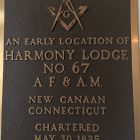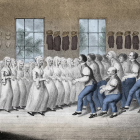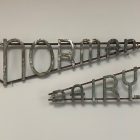New Canaan There & Then
New Canaan There & Then: The Freemasons
|
‘New Canaan There & Then’ is sponsored by Brown Harris Stevens Realtors Bettina Hegel, Joanne Santulli, Dawn Sterner and Pam Stutz. On the face of a dollar bill, there appears to be a pyramid with an eye at the top. Is this an illuminati, some other mysterious mythological symbol, or just an odd design? The truth is that this symbol comes from a brotherhood founded to promote self-improvement and a better world through the application of moral values, intellectual development, and mutual respect.
They are the Freemasons, the world’s largest extant fraternity with deep ties to New Canaan. In 1733, a Great Lodge was established in Boston, marking the start of Freemasonry in New England.




